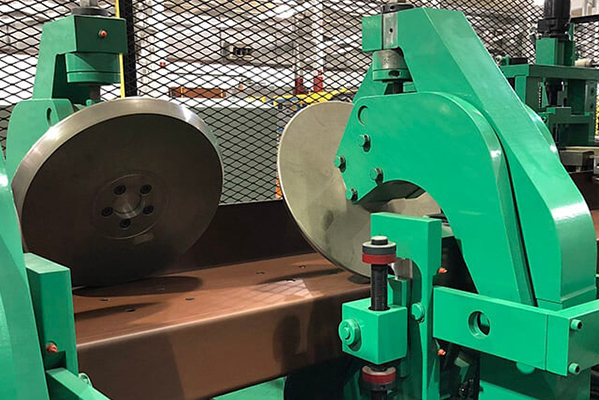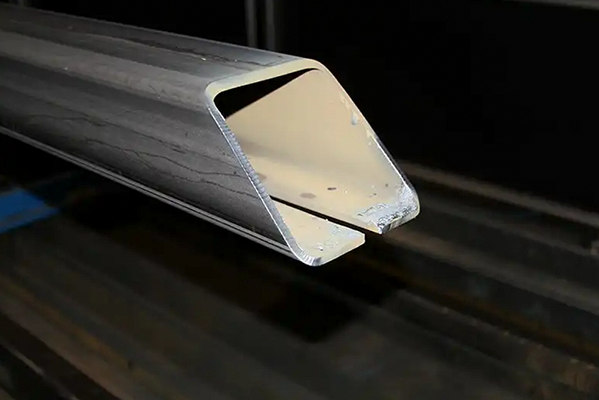Navigation Menu
Contact Us
- Email:
- info@wxavatar.com
- Address:
- Yurong Village, Yuqi Street, Huishan District, Wuxi, China.
Release Date:Jun 30, 2025 Visit:39 Source:Roll Forming Machine Factory
In the competitive world of metal forming and manufacturing, minimizing production downtime is a critical objective—especially for operations involving heavy gauge rollforming lines. These systems, designed to process thick materials under high force, must maintain consistent output to meet delivery timelines and control operating costs. So, how can manufacturers reduce downtime on heavy gauge rollforming lines? The strategies lie in proactive maintenance, smart automation, and operational optimization.

1. Implementing Preventive Maintenance Programs
One of the most effective ways to limit unplanned stoppages is through a structured preventive maintenance plan. Heavy gauge rollforming equipment operates under intense pressure and friction, which can accelerate wear on components such as rollers, shafts, bearings, and hydraulic systems. By scheduling routine inspections and replacements of parts before failure occurs, manufacturers can avoid unexpected breakdowns that halt production and result in costly delays.
Key tasks in preventive maintenance include:
Regular lubrication of moving parts
Alignment checks of roll tooling
Inspection of hydraulic lines and pressure systems
Monitoring of electrical controls and drive motors
2. Using Predictive Monitoring Technology
Beyond basic maintenance, predictive technologies can identify early signs of equipment failure. Sensors and monitoring tools can measure vibration, temperature, and load variations across the rollforming line. When integrated with a digital monitoring system, these tools provide real-time data that helps maintenance teams take corrective action before a minor issue escalates.
Examples of predictive tools include:
Vibration sensors to detect bearing fatigue
Thermal cameras for spotting overheating components
Real-time load monitoring to identify misfeeds or material inconsistencies
3. Optimizing Tool Changeover Procedures
Downtime often occurs during tooling or product changeovers, especially on multi-profile or customized production lines. Streamlining these changeovers with quick-change tooling systems and modular roll setups can significantly reduce transition time. In some advanced setups, automated adjustment mechanisms can change tooling settings with minimal manual intervention.
Additional steps to enhance changeovers:
Use pre-set gauges and alignment fixtures
Train operators for faster, error-free transitions
Schedule tooling changes during planned breaks or low-demand periods
4. Training Skilled Operators and Technicians
A well-trained workforce is essential for minimizing downtime. Operators must understand the nuances of heavy gauge material handling, machine operation, and troubleshooting. Technicians should be equipped to respond quickly to mechanical or electrical issues, reducing the time required for diagnostics and repair.
Effective training programs cover:
Equipment operation best practices
Common failure modes and warning signs
Emergency shutdown and restart procedures
5. Maintaining a Strategic Spare Parts Inventory
Having essential spare parts on-site can make a significant difference during unexpected failures. Waiting for critical components to be delivered from suppliers can extend downtime by hours or even days. A strategic inventory of high-wear or long-lead-time parts—such as rollers, seals, and hydraulic components—ensures that replacements are readily available when needed.
6. Investing in Automation and Line Integration
Automation is not just about boosting productivity—it also plays a role in reducing downtime. Automated feeding systems, material handling robots, and integrated control panels reduce manual errors and speed up workflow transitions. Full line integration ensures that each stage of the process—from decoiling to cutting—is coordinated efficiently, minimizing delays between operations.

Conclusion
Reducing downtime in heavy gauge rollforming lines is not just a maintenance issue—it’s a strategic effort that spans equipment design, operator training, and production planning. By implementing predictive maintenance tools, streamlining changeovers, and equipping teams with the right knowledge and parts, manufacturers can keep their rollforming lines running with greater efficiency and reliability. The result is a more consistent production output and a stronger return on investment.